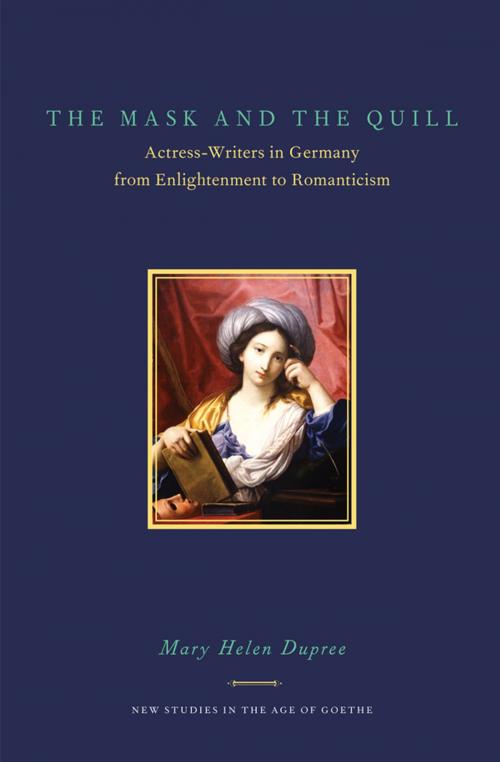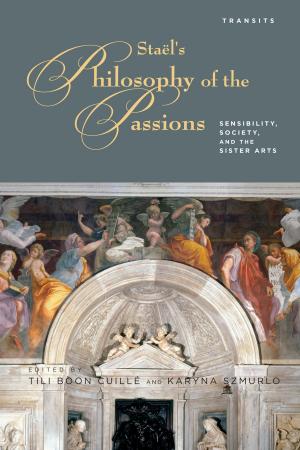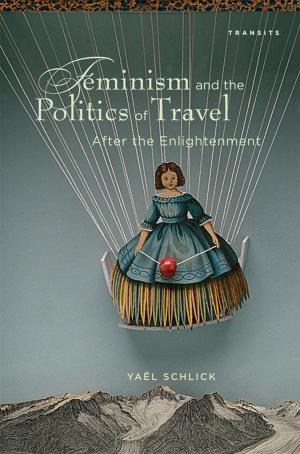The Mask and the Quill
Actress-Writers in Germany from Enlightenment to Romanticism
Fiction & Literature, Literary Theory & Criticism, European, German| Author: | Mary Helen Dupree | ISBN: | 9781611480252 |
| Publisher: | Bucknell University Press | Publication: | May 12, 2011 |
| Imprint: | Bucknell University Press | Language: | English |
| Author: | Mary Helen Dupree |
| ISBN: | 9781611480252 |
| Publisher: | Bucknell University Press |
| Publication: | May 12, 2011 |
| Imprint: | Bucknell University Press |
| Language: | English |
In the last three decades of the eighteenth century, a small but significant number of German actresses, including Sophie Albrecht (1757-1840), Marianne Ehrmann (1755-1795) and Elise BYrger (1769-1833), began to publish poetry, autobiography, drama and short fiction under their own names. These 'actress-writers' came of age at a time when the status of the actress was beginning to be radically redefined in accordance with Enlightenment aesthetics and the cult of sensibility, as the model of the enterprising actress-director in the tradition of Caroline Neuber gave way to an idealizing view of the actress as sentimental heroine. The Mask and the Quill: Actress-Writers in Germany from Enlightenment to Romanticism, is an exploration of this generation of actress-writers, their significance for German literary and cultural history, and their attempts to come to terms with the new image of the actress through literature and performance. In their texts and performances, Albrecht, Ehrmann and BYrger articulated an entirely new sense of what it meant to be an actress and a woman writer. They identified themselves with the cult of sensibility, with the theater reform movement, and above all with an image of the actress as GefYhlsschauspielerin or 'actress of emotion,' which emerged in the mid-1770s in response to the death of the Hamburg tragedienne Charlotte Ackermann (1757-1775). While some scholars have described this generation as a silent one, forced to submit to increasingly passive ideals of domesticity, actress-writers of the era defied this trend by using the image of the GefYhlsschauspielerin as a passport to literary activity. Their close relationship to theater and the nascent genre of 'paratheatrical literature' provided them with a public voice, access to literary circles and a language with which to articulate their identity as actresses and as writers. More importantly, it provided them with a space from which to critique contemporary notions of gender and virtue. Drawing on the methodologies of New Historicism and discourse analysis, The Mask and the Quill engages in readings of a broad spectrum of late-eighteenth- and early-nineteenth-century texts and cultural practices, from autobiographical fiction and lyric poetry to funeral rites and tableaux vivants. Through readings of diverse source material, it sheds light on an underrepresented group whose lives and works resist conventional notions about women's cultural contributions to the Goethezeit and beyond.
In the last three decades of the eighteenth century, a small but significant number of German actresses, including Sophie Albrecht (1757-1840), Marianne Ehrmann (1755-1795) and Elise BYrger (1769-1833), began to publish poetry, autobiography, drama and short fiction under their own names. These 'actress-writers' came of age at a time when the status of the actress was beginning to be radically redefined in accordance with Enlightenment aesthetics and the cult of sensibility, as the model of the enterprising actress-director in the tradition of Caroline Neuber gave way to an idealizing view of the actress as sentimental heroine. The Mask and the Quill: Actress-Writers in Germany from Enlightenment to Romanticism, is an exploration of this generation of actress-writers, their significance for German literary and cultural history, and their attempts to come to terms with the new image of the actress through literature and performance. In their texts and performances, Albrecht, Ehrmann and BYrger articulated an entirely new sense of what it meant to be an actress and a woman writer. They identified themselves with the cult of sensibility, with the theater reform movement, and above all with an image of the actress as GefYhlsschauspielerin or 'actress of emotion,' which emerged in the mid-1770s in response to the death of the Hamburg tragedienne Charlotte Ackermann (1757-1775). While some scholars have described this generation as a silent one, forced to submit to increasingly passive ideals of domesticity, actress-writers of the era defied this trend by using the image of the GefYhlsschauspielerin as a passport to literary activity. Their close relationship to theater and the nascent genre of 'paratheatrical literature' provided them with a public voice, access to literary circles and a language with which to articulate their identity as actresses and as writers. More importantly, it provided them with a space from which to critique contemporary notions of gender and virtue. Drawing on the methodologies of New Historicism and discourse analysis, The Mask and the Quill engages in readings of a broad spectrum of late-eighteenth- and early-nineteenth-century texts and cultural practices, from autobiographical fiction and lyric poetry to funeral rites and tableaux vivants. Through readings of diverse source material, it sheds light on an underrepresented group whose lives and works resist conventional notions about women's cultural contributions to the Goethezeit and beyond.















